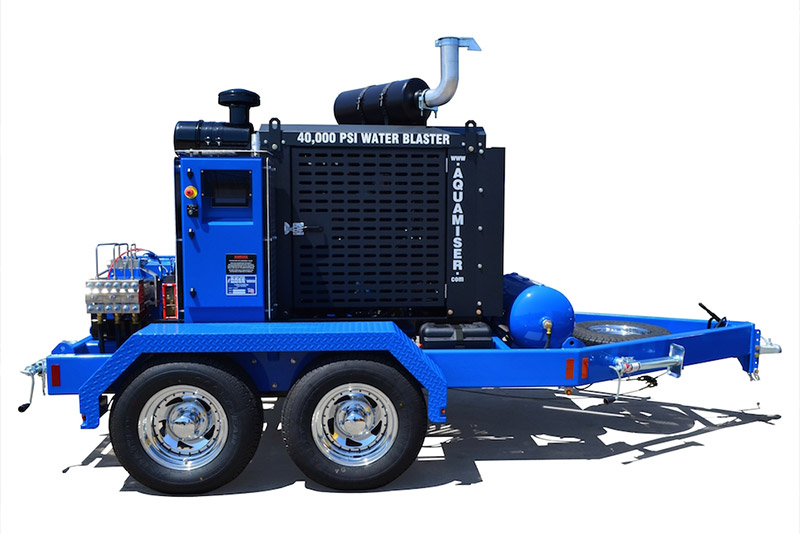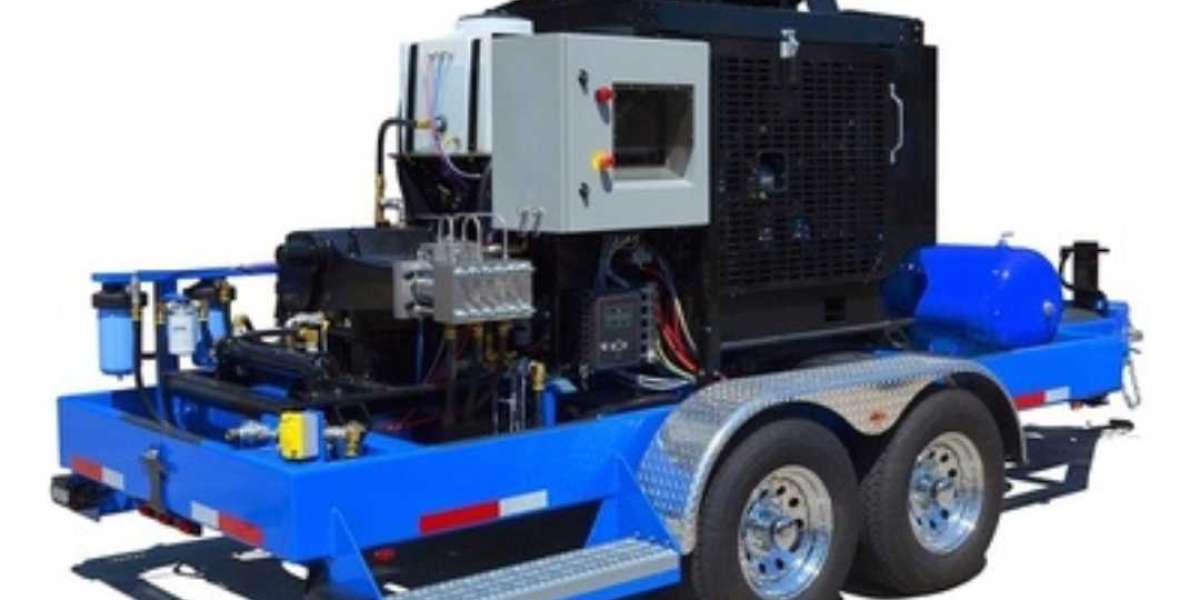Since 1870, the method of abrasive water blasting has been used. This method employs water and soap to enable degreasing while simultaneously blasting away dust and trash or hazardous materials (asbestos or other impurities). It effectively decontaminates surfaces and buildings without endangering them. Abrasive Water Blaster Equipment, which varies in size and pressure, is used to accomplish this.
Abrasive water blasting forcibly propels abrasive material against a surface under high pressure in order to achieve the following:
- Smoothing of a rough surface
- Roughening of a smooth surface
- Shaping of a surface
- Removal of surface contaminants
All conventional blasting equipment, including walk-in booths, hand cabinets, automated production equipment, and total loss portable blasting devices, can be used for the abrasive water blasting procedure. The process's speed is determined by the necessity. Because water works as a buffer, the surface that has been cleaned using this method is not harmed. Abrasive water blasting thus has two benefits: first, it lowers the rate of media breakdown; second, it keeps foreign objects from adhering to the surface. Water blasting is preferred before coating or bonding procedures because it achieves a far higher level of cleanliness than dry blasting.
Types of Wet Blasting Techniques
There are a number of wet blasting techniques presently available for choice. Few of them are
- Wet Abrasive Blasting
- High-pressure water blasting
- High-pressure water and abrasive blasting
- Air and water abrasive blasting
The choice of blasting method depends upon the requirement and according to the application.

Abrasive Water Blasting Equipments Details
The majority of wet blast equipment is cabinet mounted and is easily modifiable. Conveyors, auxiliary strippers, and wash-rinse-dry stations can all be removed. The following components typically make up the blasting device:
- Vertical wheel
- Horizontal plane turntable
- Shuttle with rail/car extensions
- Chain/belt conveyors
- Self-contained turning mechanisms for shafts and tubular parts
- Combination tumbling-cabinet machines
.
How Does Abrasive Blasting Work?
With the use of a high-velocity air propulsion system, a slurry is propelled towards a surface while using Abrasive Water Blasting Equipment. The water is chemically processed and combined with the finely ground abrasive slurry. involves the propulsion of a slurry towards a surface by high-velocity compressed air. At a pressure equivalent to that fed to a blast hose, compressed air is injected into a vessel. In order to allow the abrasive mixture to feed into an aeroplane, the pressure is equalised. Between a hopper and a mixing chamber is a full flow valve for controlling the flow of abrasives.
Applications of Wet Abrasive Blasting
The applications of wet abrasive blasting are as follows:
- Burr removal from substrates
- Preparation of surface for hard chrome coatings, bonding composites, bonding coatings, bonding composites, and time and other tool coatings.
- Aviation engine rebuilding
- Etch glass for decorative or functional purposes
- Peen surfaces for a bright, and clean appearance
- Automotive overhaul and engine rebuilding
- Clean plastic injection molds
- Hole cleaning for printed circuit boards
Benefits of Wet Abrasive Blasting
The list of benefits of abrasive blasting is long but key benefits of wet abrasive blasting are listed below:
- Extremely fine media can be used
- Media impregnation into the substrate is not possible
- Deeply cleans irregular surfaces
- Eliminates the need for hand-sanding
- Eliminates the need to use toxic chemicals
- Reduces dust
- Closed cabinet recycles media/slurry
- No heat warping with thin parts
- The final finish is appealing with a satin feel
- Provides an excellent surface for plating
- Provides an excellent surface for bonding
- Holds tight tolerances
Contact Us and get the equipment at an affordable price from Aquamiser.








